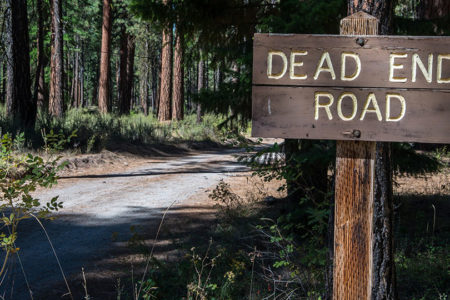Perfect Injustice: Jesus’ Trial Before Pilate
One Day in Court
It was early in the day. Yet Governor Pontius Pilate, the Roman prefect, was already facing a busy docket. He really didn’t want to be bothered with the political intrigues of the Jewish high priest and his Sanhedrin council. The heat always rose early in Judea, and Pilate was hot, sweaty, and irritated even before the council members came to see him, dragging with them this Jewish prophet or desert preacher or whatever he was.
Pontius Pilate was staying in Herod’s palace, as was his custom on visits to Jerusalem. It so happened the Jews were celebrating one of their religious festivals, and he was getting the feeling this was one case he couldn’t dodge. Yes, he hated Jerusalem, and he hated the Jews and their insufferable religious customs and observances and their intractable defensiveness about that Temple of theirs. But he knew that he could not risk offending the Sanhedrin, certainly not now. After all, a large contingent of Jews had gathered outside the praetorium, including the chief priests and their cadre of religious lawyers. And they weren’t going away until he dealt with this Jesus fellow.
As Pilate eyed the accused, who was standing before him quietly, his hands tied, he noticed that “rough justice” had already been administered. Jesus’ robe was torn, and he obviously had been beaten.
Nothing special about that, Pilate thought. except there was something else. Something about the man’s demeanor. He could hardly call it dignity, could he? A wandering preacher, dressed in rags. Well, whatever it was, it was beginning to unnerve Pilate. The prefect was feeling increasingly pressed to make a decision. And this man’s serene, implacable stare as he stood there, without a tinge of fear or anxiety even though bloodied and facing possible execution, was not making it any easier.
Pilate couldn’t help but think back to his failed track record in Jerusalem. He had been called into Judea to regain control of the region. His predecessor, Archelaus, one of the sons of “Herod the Great,” had failed miserably trying to rule the area after his father’s death. The Herodian ruler had sent his own troops into the Temple courts to control a riot and ended up slaughtering three thousand people. A few weeks later Archelaus blithely left on a trip to Rome and another riot broke out. The Romans ended up crucifying 2,000 locals around the city walls to quell the disturbance.
Pilate thought he could do better. After all, he had mused to himself when he had first arrived in Jerusalem as prefect, Caesar demands peace and control in his occupation territories—and I am going to give it to him.
But then reality set in. In order to stop a disturbance, Pilate had to send troops into the Temple area, killing a number of Galileans, their blood spilling over the stone floor, mingling with the blood of the animals that had just been sacrificed.
Then there was the debacle with the standards. Wanting to make a show of force in Jerusalem and gain control through intimidation, Pilate, in the darkness of night, ordered his troops to erect a perimeter of Roman flags all bearing the likeness of Caesar. Never mind that he had erected “idolatrous” images in the shadow of the Jewish Temple. Another riot broke out.
This time a huge contingent of Jews marched all the way north to Pilate’s headquarters in Caesarea and demanded that the Roman standards be removed. Then, when he ordered his soldiers toward the mob, every last one of the Jews bared their necks, daring him to kill them. even the centurions were impressed.
Pilate still cringed when he remembered how he had to back down. But what else could he do? Political survival in this forsaken territory of Judea obviously required diplomatic delicacy, something he found offensive. He preferred blunt force. It was quicker—more direct. But Rome wanted stability in the region. Pilate now wondered whether that would ever be possible.
He gazed over at Jesus again. The Jew had just confessed that he was a “king.” But Pilate was smart enough to know the itinerant rabbi was talking about some kind of religious kingdom—not a political one. The chief priests were urging him to use his authority to execute capital punishment, claiming Jesus had committed treason. But Pilate knew that under strict Roman law, the man posed no risk of sedition.
Then he heard one of the scribes (or was it one of the priests? or maybe both) yelling something about how Jesus had stirred up the people in Galilee.
Herod Antipas, Tetrarch of Galilee, is here in Jerusalem for the festival, Pilate thought. This Jesus is from his jurisdiction. Let Herod handle the case. Why should I have to decide?
And now, as he glanced again at Jesus of Nazareth, the Roman prefect finally started to manage a smile. But it soon faded when he saw Jesus gazing at him like a torch burning dry papyrus, searing right through the thin veneer of Pontius Pilate’s political motives.
History Speaks
This dramatic scenario may or may not accurately reflect Pontius Pilate’s inner thoughts. But it is consistent with the four Gospel accounts and the considerable ancient history that corroborates Jesus’ Roman trial.
After all, to doubt the historicity of Christ’s trial before Pilate is like questioning whether the American pre-Civil War Supreme Court ever decided the Dred Scott case.
The existence of the Sanhedrin is clear. And the Herod family is firmly established in the writings of ancient Jewish historian Flavius Josephus, who also wrote of Jesus’ trial before Pilate. The identity of the Roman prefect is proven even outside the biblical accounts and those of Josephus.
In the 1950s an excavation in Caesarea, Pilate’s official residence, uncovered a stone inscription. Although part of it was missing, it clearly read, “Pontius Pilate, the Prefect of Judea.”
I have heard those who doubt the Bible and point to the unusual and, they argue, unhistorical practice mentioned in all four Gospels, where Pilate gave the crowd a voice-vote choice between Jesus and Barabbas. Yet this practice of pardoning criminals through a popular vote did exist. A first-century papyrus (Papyrus Forentinus) from Roman-occupied Egypt revealed the same practice was used in A.D. 85.
A Mysterious Friendship
But there is an intriguing question that neither Scripture nor history has answered. Why, after Pilate sent Jesus to Herod for further proceedings, does Scripture say, “That very day Pilate and Herod became friends” (Lk. 23:12)? They had been enemies. Was Herod simply being cordial? That seems unlikely. Ancient writer Philo recorded that Pilate once set up his own golden shields in the Herodian palace in Jerusalem. Herod Antipas was outraged and filed a complaint with Tiberius Caesar, who then ordered Pilate to take them down. With that bitter enmity between them, only an extremely strong, self-serving motive that promised to benefit both of them could have healed the breach. so, was there an actual conspiracy between Herod and Pilate? And if so, against whom?
There is one possible explanation. Before Herod, Jesus stood mute. Herod returned Him to Pilate because he could find nothing against Him “deserving of death” (lk. 23:15). Yet according to Acts 4:27, both Herod and Pontius Pilate turned against Jesus. Combining these verses yields the following possibility: Herod, while secretly wanting to rid himself of anyone (particularly Jesus) who threatened his political ambitions, may have thought he could use Jesus as a pawn in his master chess game—with the ultimate goal of checking the ever-expanding power of the high priest and Sanhedrin. At the same time, Pilate simply wanted to avoid making another unpopular decision and could have viewed Herod as an expedient ally. After all, Pilate was both a moral midget and ruthless pragmatist.
The Great Decision
Regardless of their motives, neither Herod nor Pilate were successful. Herod was later deposed by Caligula in A.D. 39. And Pilate, after his many failures, was relieved of his command by Rome.
Yet Jesus, wrongly convicted and cruelly crucified, was buried in a rich man’s tomb and three days later, arose triumphant.
Pilate’s job as a Roman prefect was to administer justice. even in occupied territories Roman justice was supposed to prevail. Roman procedure recognized the right to silence and the presumption of innocence. Ancient transcripts of Roman civil trials from that period show a striking similarity to American court procedure: attorneys were present, documentary evidence was introduced, and sophisticated legal arguments were made. Yet Pilate disregarded all of these safeguards by permitting—even ordering—the execution of a man he had already declared to be innocent of any capital offense (lk. 23:14–15, 22).
Pilate’s last recorded question to Jesus, one that must have been uttered in a tone of frustration and outraged arrogance, was, “Do You not know that I have power [authority] to crucify You, and power to release You?” (Jn. 19:10). But Jesus’ answer must have cut Pilate to the quick, as He reminded the prefect that God was the ultimate Grantor of authority (v. 11). Pilate then doubled his efforts to avoid the legal and political debacle unfolding before him, but to no avail (v. 12).
Yet Jesus was not killed because of Pilate’s failure to administer justice or because of Herod’s conspiracy or the bad faith of His Sanhedrin accusers. Jesus’ blood was willingly and purposely “shed for many for the remission [forgiveness] of sins” (Mt. 26:28).
The basis of ancient Roman justice was reflected in a popular maxim, (it was later codified in the Institutes of Justinian) that Pilate undoubtedly knew but chose to ignore: “Justice is a set and constant purpose giving to everyone his due.”
So then, here is the personal decision before each of us: Considering Jesus’ claims to have been the Messiah, the son of God incarnate, the savior, the perfect and final offering for sin, have we—you and I—given Jesus “His due?”







